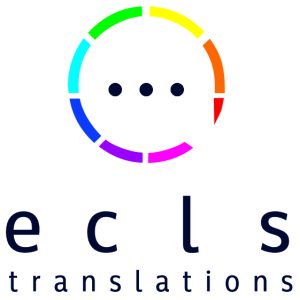At the start of any translation project, it’s important to establish the format of the documents you need translating and the format in which you’d like to receive your translations back. Ironing out any issues at this early stage is crucial, as it will make the translation process run a lot more smoothly and will help your provider to understand your requirements and expectations from the start. Your translation agency should be able to advise on the best course of action depending on the type of document you need translating.
To help you get started, we’ve put together a short guide covering the main document types with tips on how they can be prepared for the translation process.
It’s worth remembering that a lot of translation agencies and translators make use of CAT (computer-assisted translation) tools. These help to break texts down into manageable segments and store/create translation memories to make sure that your documents are translated consistently and in line with your style and terminology requirements. Repeated text can also be translated for you at a discounted price. CAT tools work best with editable documents, as they can extract the readable text and prepare it for the translation team.
Let’s take a look at some of the different document types and how these can be prepared for the translation process.
- An editable file is a CAT tool’s best friend
If you already have the content you need translating in an editable format, such as a Word or Excel file, the good news is that you probably won’t need to do much more in terms of preparation! Our top tip here would be to make sure that you send your translation provider the final version of the document you need translating without any track changes or unresolved comments. It’s also a good idea to make sure that you’re happy with the formatting of the original document, as the translation will follow the same layout. Make sure to check for any pesky uneditable text that’s lurking in an otherwise editable file, such as images that have been copied and pasted, and check if you have the original versions of these to send to your provider if they do need translating.
- How to handle PDFs
PDFs come in all shapes and sizes. More often than not, the document will have originally been created in some other software, such as Word, PowerPoint, InDesign etc. and it will have been saved as a PDF along the way to make it easy for everyone to access. If you have the original file format of your PDF, make sure to send this to your translation agency. It will be easier for them to work with and will reduce any preparation and formatting costs that might be involved. If this is not possible, most translation agencies will work with specialist typesetters who can convert PDFs into Word or InDesign files, for example.
If your PDF is a scanned document, this can make things a little trickier but not impossible! Usually, the translation of a scanned PDF would need to be typed up in a new file, e.g. a Word document, which can take more time and means the translator won’t have access to the CAT tools they would usually use. It’s also possible to type out the source text into a Word document and then run this through a CAT tool for translating. Again, this does take time and will involve some additional costs. It also means that any formatting will be lost and the translation may need some work afterwards if you would like the layout of the original document to be replicated.
The main thing here is to try to make sure that the scan can be read clearly. You can do this by ensuring that the original document is scanned at a high resolution so that the text can be read more easily. Make sure to avoid any blurred edges or anything else that might distort the text and make it difficult to decipher. After all, your translator will need to be able to read the document well to be able to translate it!
- Website content
Nowadays, more and more companies are translating their websites to target new audiences overseas. A professionally translated website is key to maintaining your brand reputation, building trust on an international scale and engaging with new clients and customers. But where do you start with getting your website translated?
If your website is fairly small and you already have the content saved in, for example, Word files, these can easily be translated using CAT tools and you can then reinsert the translated content into your website. You could also copy and paste the content from your website into Word or Excel files and follow the same process. This approach is great for smaller websites or if you only need a few pages from your site translating. If you do choose to go down this route, make sure that the files contain everything from your website that needs translating; occasionally things like menu items can be missed.
The other approach is to export your website content in another format, such as XML or HTML. After some preparation, these files can then be opened and processed using CAT tools. Usually, a software developer or website admin will have access to your website content and will be able to export the relevant pages for translation. If your website was created using WordPress, there is also a plugin that enables you to export the content in XLIFF files. This is a well-known CAT tool format and will make the translation process run even more smoothly, as the files shouldn’t require much additional preparation.
Whichever format you choose, your provider should always run a test and send you a pseudo translation to try importing back into your site to check that everything works properly before translation begins.
Our top tips here are to think about which content you need translating from your website. There might be blogs, for example, that won’t be relevant to your target audience and won’t therefore need to be translated. Also, make sure to communicate clearly and openly with your translation provider to ensure the project runs smoothly and your requirements are understood from the start.
- InDesign files
InDesign is a well-known desktop publishing software programme that can be used for creating marketing content like flyers, brochures, posters etc. Some clients like to copy and paste the text from their InDesign files into Word to get the content translated and then will reinsert the translations themselves. Most translation providers, however, will work with professional typesetters who can take care of the entire layout for you, so that you receive a fully formatted print-ready translation back. If you’re not familiar with the target language, this can be particularly helpful, especially if it uses a different alphabet or reads from right to left instead of left to right! If you do decide to get your translation professionally formatted by your provider, our top tip here would be to make sure to send them all the relevant files. This includes the .idml file, which is compatible with CAT tools, and the original .indd file, as well as any fonts and links. Also make sure to check if there is anything that’s uneditable within the InDesign files, that’s been copied and pasted from a different source, for example, and let your provider know if such text will need translating.
- Tips for all documentation types
Whether you need a simple Word file or a complex PDF translating, there are some tips that apply regardless of documentation type. As we mentioned earlier, make sure to send the final version of your document to your provider to ensure the quote for your project is accurate. If you make changes to the text while the translation process is underway, it’s likely that this will incur additional charges. Check for any text that might be uneditable in otherwise editable files and decide whether this needs translating and let your provider know. Similarly, make sure you’re happy with the layout of your document and discuss any issues or specific requirements with your translation provider at the start of the project. If you have short texts that need translating, it’s best to group these together for your translator to work on at once, as most agencies will charge a minimum fee for each smaller text to cover project management time, research, translation and proofreading.
We hope this short guide has given you a useful insight into how to prepare your documents for translation! As you can see, there are lots of factors to consider, but a good translation provider will be able to talk you through your options and help you along the way. Spending some time preparing your documents for the translation process and discussing your requirements with your provider at the start of a project will save you valuable time and costs in the long run.
If you’d like to discuss getting your documents translated, don’t hesitate to get in touch with us: info@ecls-translations.com.


